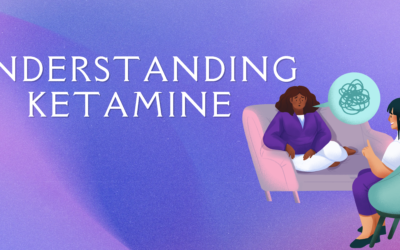Ketamine and Chronic Pain Management: A New Frontier in Treatment
Chronic pain affects millions of people worldwide, significantly impacting their quality of life. Traditional pain management strategies often include medications such as NSAIDs, opioids, and antidepressants, but these can come with limitations and side effects. Recently, ketamine has emerged as a promising alternative for chronic pain management. This blog explores how ketamine works, its potential benefits, and what patients should know about this treatment option.
What is Ketamine?
Ketamine was initially developed in the 1960s as an anesthetic for surgical procedures. It is classified as a dissociative anesthetic, meaning it can induce a trance-like state while providing pain relief and sedation. Over the years, researchers have discovered that ketamine may also have significant applications in treating chronic pain conditions, especially those that are resistant to conventional therapies.
How Does Ketamine Work for Pain Management?
The exact mechanism by which ketamine alleviates pain is not fully understood, but several factors contribute to its effectiveness:
1. NMDA Receptor Antagonism: Ketamine primarily works by blocking N-methyl-D-aspartate (NMDA) receptors in the brain. This action helps modulate pain transmission and alters the central nervous system’s response to pain stimuli, reducing the sensation of pain.
2. Anti-inflammatory Effects: Ketamine has been shown to have anti-inflammatory properties, helping to reduce inflammation, which can be a significant contributor to chronic pain.
3. Opioid-Sparing Effects: For patients who may require opioids for pain management, ketamine can enhance pain relief while potentially reducing the amount of opioids needed, thereby minimizing the risk of dependence and other side effects.
4. Neuroplasticity and Mood Enhancement: Ketamine has been linked to increased neuroplasticity—the brain’s ability to adapt and reorganize itself—which may help in resetting abnormal pain pathways. Additionally, its rapid antidepressant effects can improve overall mood and well-being, further aiding in pain relief.
Indications for Ketamine in Chronic Pain Management
Ketamine is not a first-line treatment for chronic pain, but it shows promise for certain conditions, including:
- Fibromyalgia: Patients with fibromyalgia, characterized by widespread musculoskeletal pain, may find relief from their symptoms with ketamine infusions.
- Complex Regional Pain Syndrome (CRPS): This condition can cause severe pain and other symptoms following injury or trauma. Ketamine may help manage the debilitating pain associated with CRPS.
- Neuropathic Pain: Conditions caused by nerve damage or dysfunction, such as diabetic neuropathy or postherpetic neuralgia, may respond well to ketamine treatment.
- Chronic Migraines and Tension Headaches: Some patients experience reductions in headache frequency and intensity after ketamine therapy.
The Administration of Ketamine
Ketamine can be administered in several ways, including:
1. Intravenous (IV) Infusion: The most common method for treating chronic pain, where a controlled dose of ketamine is delivered directly into the bloodstream over a specific period.
2. Intranasal Spray: A more recent formulation allowing for delivery through the nasal mucosa. This method offers ease of use and quick onset of action.
3. Oral Tablets: Though less common, some providers may prescribe oral ketamine for chronic pain management, though dosage can be more challenging to regulate.
Potential Side Effects and Considerations
While ketamine can be an effective treatment for chronic pain, it is essential to be aware of potential side effects, which may include:
– Dissociation or altered perception
– Dizziness or lightheadedness
– Nausea or vomiting
– Increased blood pressure
– Hallucinations (typically transient)
Due to the nature of ketamine, it is crucial to be treated in a controlled medical setting, especially for IV infusions, where patients can be monitored for adverse reactions.
Conclusion
As chronic pain continues to challenge patients and practitioners alike, ketamine represents a novel approach to pain management. Its unique mechanisms and potential benefits offer hope for those who have exhausted other treatment options. If you or a loved one is struggling with chronic pain, consider speaking with a healthcare provider about whether ketamine could be a suitable addition to your pain management plan.
Always consult with a qualified healthcare professional before starting any new treatment and ensure that you receive care from experienced providers who understand the complexities of ketamine therapy. With ongoing research and clinical use, ketamine may well change the landscape of chronic pain management in the years to come.
Understanding Ketamine
Understanding Ketamine: A Revolutionary Treatment for Depression and Beyond In recent years, ketamine has gained significant attention in the medical community, particularly for its promising applications in treating depression, anxiety, and other mental health...
Unpacking Its Transformative Role in Mental Health
Ketamine, originally developed as an anesthetic in the 1960s, has garnered significant attention in recent years for its potential benefits in treating various mental health conditions. This powerful drug, once primarily associated with recreational use and...
Whats new about Ketamine
Once known primarily as an anesthetic and a party drug, ketamine is now gaining significant attention in the medical community for its potential therapeutic applications, particularly in treating mental health conditions. Recent research has focused on its effects on...




